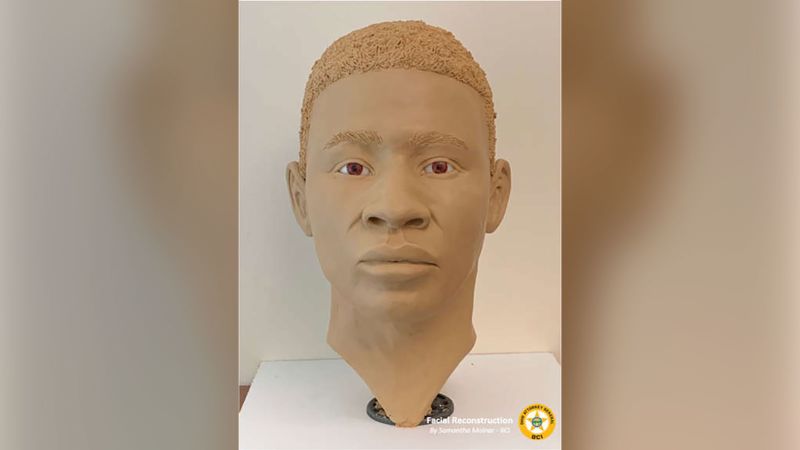Two people in Ohio cold cases are identified after a plea for tips on one led to the ID of another | CNN


CNN
—
Ohio investigators were trying to identify human remains found decades ago when a tip led them to identify the remains of another person found around the same time almost 200 miles away, officials said Monday.
Investigators now believe they’ve identified both sets of remains, officials said.
“Old-fashioned detective work, modern DNA technology, and a serendipitous tip that was offered in one case but proved vital in another case have led to the identification of two John Does in northeast and central Ohio,” a release from Ohio Attorney General Dave Yost’s office reads.
In August, the Mahoning County coroner’s office and Youngstown police released images of a clay facial reconstruction that an artist derived from human remains found in 1987 in Youngstown.
Anthropological analysis suggested the remains belonged to a Black male between the ages of 30 and 44 years. Investigators said at the time they believed the remains had been at the site where they were discovered for three to five years.
Shortly after the images were released, Youngstown police received multiple tips – including one that investigators eventually determined didn’t fit with the Youngstown case, but did connect with a different cold case across the state in Fayette County, the release reads.
In the Fayette County case, unidentified remains were discovered in 1981. The tip has helped the Ohio Bureau of Criminal Investigation to identify the remains as those of Theodore Long, the release reads.
“It gives us some comfort that we no longer have to refer to this person by a location, but instead his name: Teddy Long,” Fayette County Sheriff Vernon Stanforth said.
The Fayette County Sheriff’s Office is investigating Long’s death as a homicide, the release said without elaborating. Details about how authorities believe Long died weren’t released.
At the same time, Youngstown detectives kept working on their 1987 case, and eventually were able to use genetic genealogy to identify the remains as those of Robert Sanders, the release reads.
Genetic genealogy compares unidentified DNA to DNA that was submitted to commercial databases by members of the public. In that comparison, researchers may find relatives of the person whose DNA is unmatched, and investigators can then check to see whether those families have a missing person.
The release did not include further details about Sanders’ death.
Both the Fayette County Sheriff’s Office and Youngstown police are asking anyone with information into either investigation to contact them.
Share this news on your Fb,Twitter and Whatsapp
Times News Network:Latest News Headlines
Times News Network||Health||New York||USA News||Technology||World News